Argente Cream: A* Ccʰ D* E* pp Uw*
Argente Cream is one of the least seen coat colors of the Mongolian gerbil. This color is created when an Agouti gerbil carrying a Himalayan colorpoint gene inherits the Pink Eye gene. Argente Creams are a soft delicate creamy-orange on the body , with pink eyes and white tummy.
[Can’t find an image as so uncommon]
This color is one of three shades of ginger-colored gerbils found – using the two most common gerbil colour genes – the Agouti gene and Pink Eye gene (see text below). However, due to most gerbil lines not obviously carrying the Himalayan colorpoint gene, this is the least seen of the three ginger shades found in pet gerbils.
Argente Cream is the palest of the three shades of orange and is quite a unique colour and not often seen. A real gem.
Argente Creams are reasonably easy to identify in their standard non-spotted form as they are the only really pale ginger gerbil with a standard white tummy – but with the extension of yellow ‘fading’ gene, the new dilution gene (d) and mottling (with different combinations of up to three spotting genes) it is possible to get them all confused. You might need to do some homework.
In the gerbil fancy – there is often a simple ‘Argente AV’ class where AV means ‘all varieties’ so it doesn’t actually matter if your gerbils isn’t a Cream but a lighter-looking Fawn, it can still enter.
Dove is the exact genetic [aa] pair to an Argente Cream – another unusual color – which has the same color and genetic notation – [Ccʰpp].
Pink Eyes in the population:
The gene that creates the Argente colour – the Pink-Eyed gene – works by diluting all the pigment forming cells in a growing embryo – this results in the black being lost from the eyes (leaving them pink) and in this case it has the effect of removing all the black from the hair tips too, leaving the gerbils ginger.
An Argente Cream gerbil is basically an Agouti gerbil with all its black pigment missing.
The actions of this gene is also associated with poor eyesight as these gerbils have no protection from the sun and you can see straight into the blood vessels and tissues – hence the pink colour. The black pigment in the iris generally blocks out the harmful effects of the sun – but it isn’t there in gerbils with pink, ruby and red eyes.
As a result, over time the effects of sunlight will damage some of the delicate tissues in the eyes which are now unprotected.
I’m not sure it IS Argente Cream yet?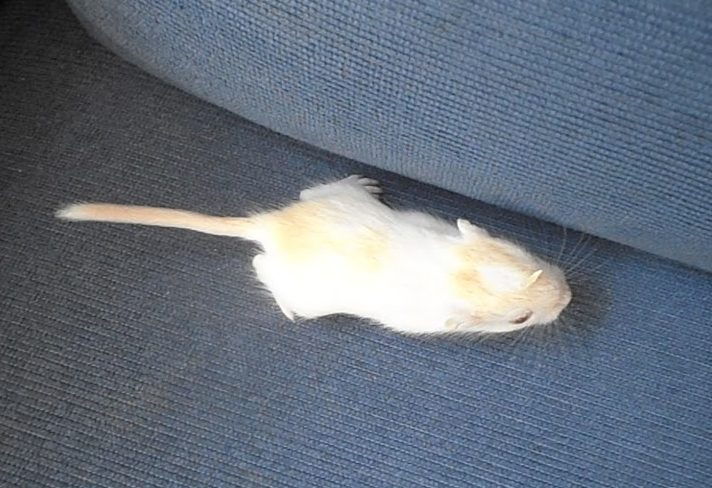
Well, as described above, there are quite a few different gerbil colors that you could mistake for the Argente Cream as they are all pale gingery-colours with white tummies.
The problem here is that the extension of yellow gene not only reacts with single colorpoint genes strangely – where they lighten the coat considerably and more so as they age – but it reacts with the dominant spotting gene strangely too – creating Honey Creams (which are a dominant spotted ginger Honeys or Foxes) that as a pup will have hardly any coat colour but which comes back with successive moults and can be quite pale. (see image top right of Honey Cream.)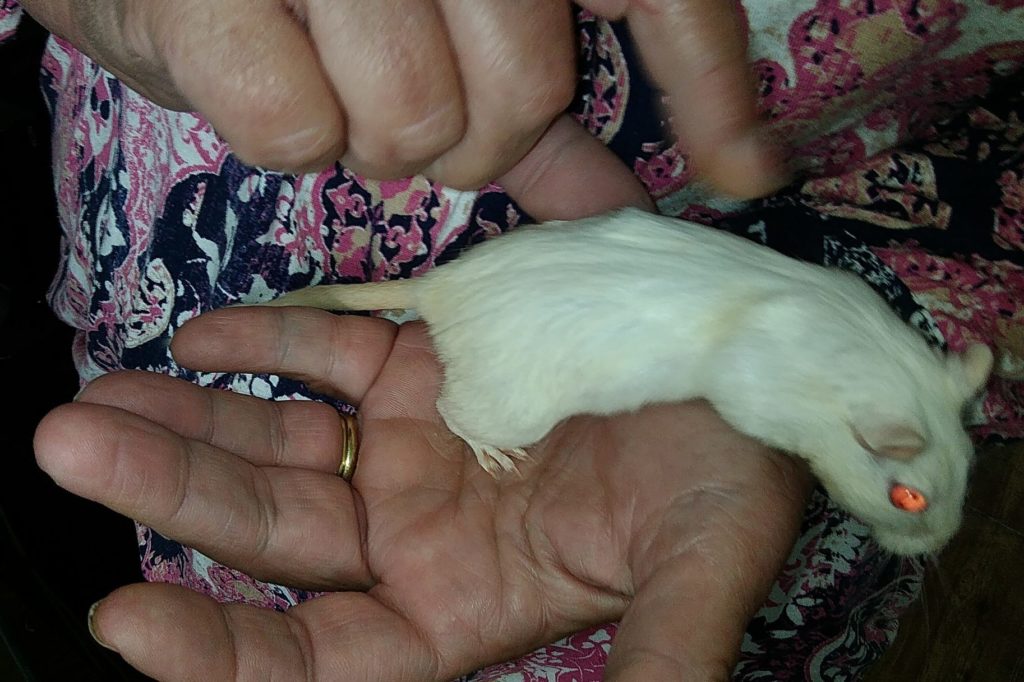
Additionally there is a second version of the extension of yellow gene called ‘fading’ (written as eᶠ) that can lighten a coat when carried hidden – but when you get two together creates new colours (called Schimmel (or Mold)) which fade as they age – almost to solid white (apart from the points and tail which stay ginger). (see image bottom right.)
We haven’t finished yet….
There is also the newly-discovered dilute gene (d) which can be added to any already existing gingery gerbil – including the Argente Fawn and Cream to make them even paler.
However, do not fear – it is still really easy to confirm your Argente status amongst all this color confusion believe it or not – and it is really simple. As with all Argente colors – just rub their hair the wrong way and you will see silver.
You have Argente Cream gerbils you want to Breed?
Due to the prevalence of most of the genes needed to create an Argente Cream gerbil, you only need to add in the Himalayan gene for sure to start creating them in larger numbers.
Genetics-wise (apart from the cʰ) the genes for an Argente are ‘strong’ (strong in this instance means prevalent and dominant), so mating an Argente Fawn gerbil to any other pink-eyed gerbil on the agouti-side, you will probably get your matching pups in the mix. You don’t usually get a random Argente Cream in a litter from any-old gerbils.
Is the pup below an Argente Cream?
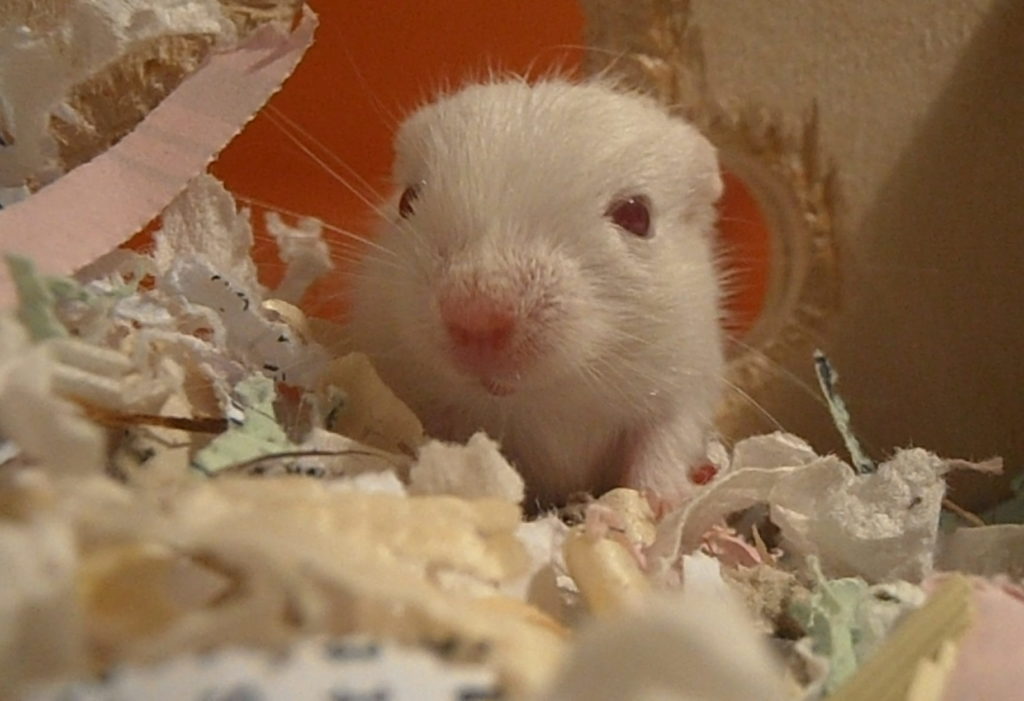
You want Argente Cream Pups?
There are only a few ways to get Argente Cream pups in your litters because of this pesky [cʰ] gene.
If you want 100% Argente Cream pups in your litters from two Argente Cream parents – you’re out of luck.
Argente Creams do not breed true as they need two different [c] genes at their colorpoint locus. Because they need both [C] and [cʰ] at the same time – when you breed them together they will never give their pups these long-searched for genes – they will mix them all up and give you other colors.
As a result, breeding together 2 Argente Fawns will give you the following 3 pup colors:
- 50% – Argente Fawn
- 25% – Argente Golden
- 25% – Pink-Eyed White*
*These darn Pink-Eyed Whites (PEWs), get everywhere – and usually they are a bit of a pain for a breeding program as you can’t tell what they actually are genetically – however, in the above example you do know what they are – they are Argente Cream carrying-machines.
If you were to create one of these PEWs – you could use it in your line paired, ideally, to an Argente Golden you would create as near as 100% Argente Cream as anyone could (all bar the odd recessive).
However, you most likely won’t be in this set up straight away so please look at ideas below to get you started:
Only breed gerbils on the self side
Avoid breeding any self-based colors into your line as these will only serve to reduce your overall agouti-based pup numbers therefore reducing your odds of getting Argente at all.
Only breed gerbils with red/pink eyes
Breeding only pink-eyed gerbils means you will be eliminating all the dark-eyed colors (Grey Agouti, DEH, etc) – which will effectively double your chances of getting Argente instantly – breeding an Argente Cream to any one of the silvers (Lilac, Sapphire or Dove) would be great percentage-wise.
However, be careful not to use two gerbils with the same sets of recessives – as otherwise you will only get pups with those (i.e. don’t breed two RESNs, or an Apricot to a RESN as all the pups will be pink-eyed [uwᵈuwᵈ] gerbils = no Argente Creams can be made here).
Always breed only one colorpoint in a pair
If you use two colorpoints you won’t get Argente Creams – as you need one non-colorpoint [C] in there, However, using no colorpoint colours will drastically reduce you chances of getting them – possibly to zero.
Ideally you would use light colorpoint (LCP) colors for this – but they are hard to spot unless they are a Siamese or LCP Slate (see image below) – so you may have to gamble on a light-looking ordinary dark-eyed colorpoint and hope for the best.
Doing this though, you will need to balance out the red eyes – so ideally a Siamese (shown below) or LCP Slate to any pink-eyed agouti-based colour would be good.
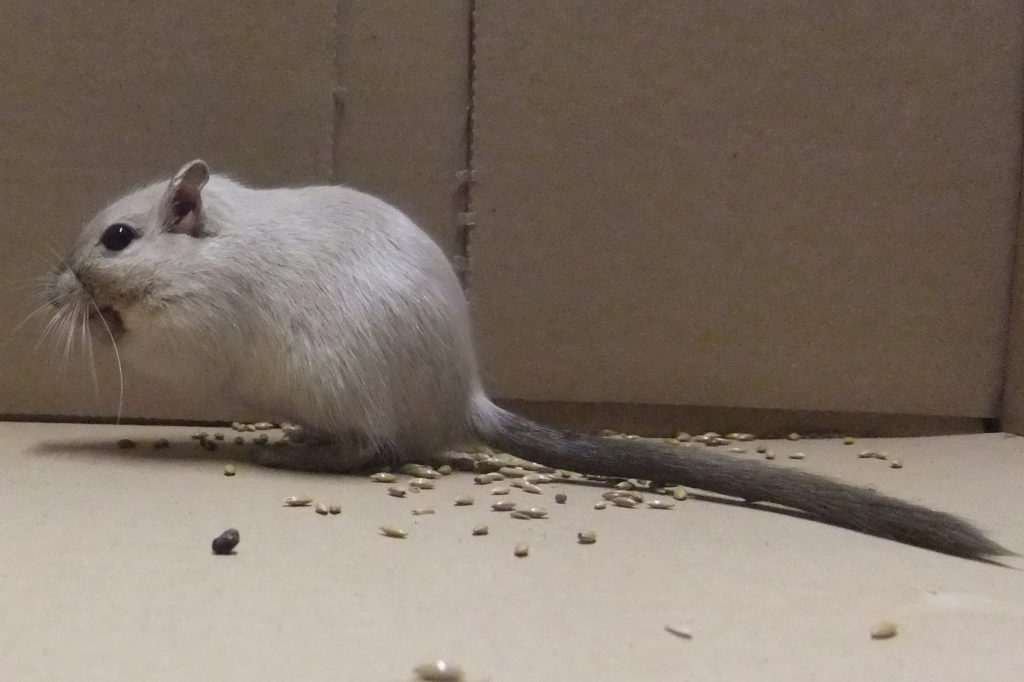
You could gamble on a PEW here too – as they are also colorpoints and have the pink-eyed gene – but you really would need some idea that they had a [cʰ] parent at least and that they weren’t [AA] or [cᶜʰᵐcᶜʰᵐ] – as these would stop your breeding plan dead and take generations to eliminate again.
Don’t have Argente Cream gerbils – but want them?
If you don’t have any Argente Cream gerbils of your own but still want them – you could try one of the following plans to get them…
1) Breed a Himalayan* to any non-colorpoint red-eyed agouti-based gerbil ( – best)
2) Breed a Siamese** to any non-colorpoint red-eyed agouti-based gerbil ( – good)
3) Breed any red-eyed agouti-based gerbil with an Agouti*** ( – could be good)
4) Breed a really light colorpoint to a Burmese or CP Slate gerbil (for a first generation****)
Himalayan and Siamese are both genetically dark-eyed gerbils – so although they are perfect for adding to your Argente Cream breeding program – ideally they need to have had a red-eyed parent – or at least the chance of them carrying the pink eye gene – otherwise you won’t get Argente Cream in the first litters.
If they don’t carry the necessary p, then you will get up to 100% Golden Agouti pups in the litters BUT – half (with Siamese) or all (with Himalayan) of them would carry the gene you need. Other hidden recessives could also appear.
*Himalayan gerbils can be either [A*] or [aa] – but it doesn’t really matter which one you use for this – although [AA] would be better if you could get it.
**Siamese is only used here as it is an easy to identify [cʰ] carrier. You could just as easily use any other [cʰ] carrier you could identify like LCP Slate or LCP Agouti etc.
***The Agouti would need to carry the recessive pink-eyed gene to be sure of getting Argente even.
****If you can pull out a hidden [cʰ] from an unidentifiable LCP something-or-other and add it to a known [cᶜʰᵐcᶜʰᵐ] self colorpoint in a pairing – it will throw out Siamese or LCP Slate pups – both of which are easily identifiable (especially when in the same litter as Burmese and CP Slate) and which can be used in your breeding program.
Is the pup below a CP Golden Agouti or a Light CP Golden Agouti?
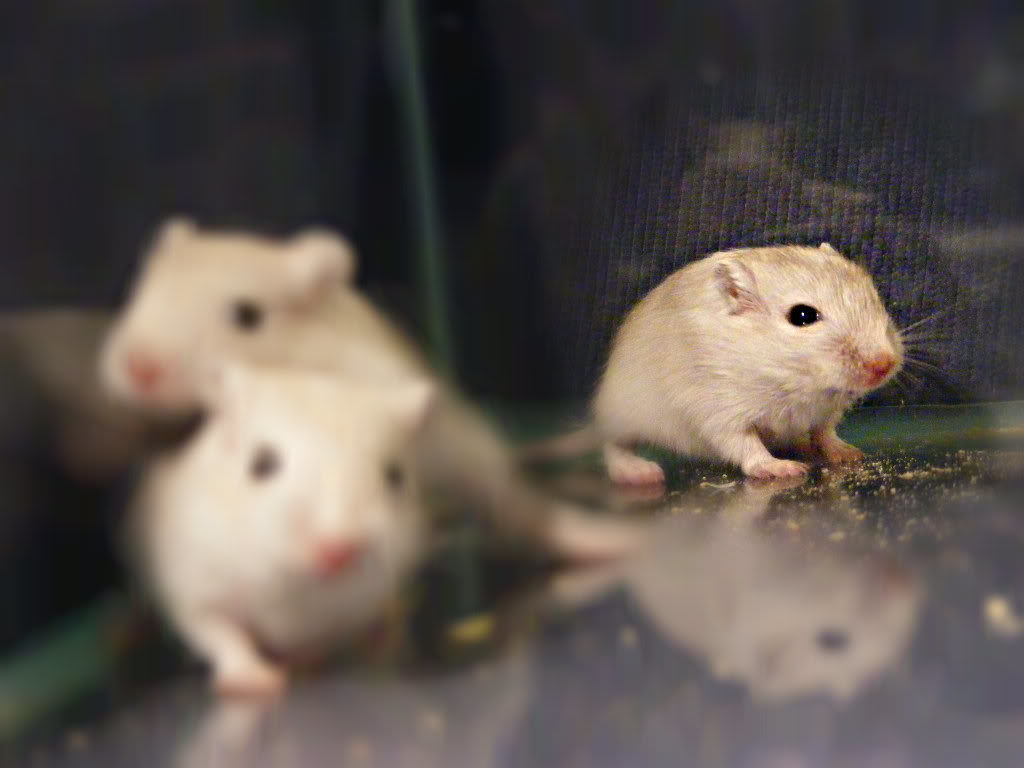
Either way, after the first round of breeding, you would have all the right genes at your disposal – you would just need to make sure you kept your records in order.
Then you start your Argente Cream clan.
Don’t want Argente Cream pups in your litters?
There are several ways you can be sure of NOT getting Argente Cream pups in your litter, but seeing as they are quite rare anyway in litters – you might get away with just reducing the percentage of chance to almost zero with each breeding pair.
For example if you have the genes to make 10 colours of pup – one being Argente Cream – the chances of it coming up in one litter is slim anyway. So rather than eliminating the genes they need – you could flood the gene pool with other genes instead.
Don’t breed gerbils with pink/ruby/red eyes
If neither parent has the pink-eyed gene in a double dose – you won’t get first round Argente Creams – and if you do it will only be a 25% chance or less to boot. To delete all Argente colors completely – you would need to make sure one or both parents were double dominant for the [P] gene – so [PP] (which may need test breeding to determine).
If you only have one parent who is [PP] – there is a chance down the line – even if you only breed dark-eyed gerbils together that a pink-eyed pups could turn up – and it could be an Argente Cream.
Use gerbils that carry loads of other recessives
By breeding for rainbow litters (making sure both parents are heterozygous at every point) you can decrease your chances of one of the pups being Argente Cream. If you can remove the recessive colorpoint genes at the same time – you are doing just fine.
Only breeding Burmese (and other cᶜʰᵐcᶜʰᵐ colorpoints and carriers)
An Argente Cream gerbil can’t be created with the [cᶜʰᵐ] gene – it needs only the [C] and [cʰ] genes – so by breeding only those with the unwanted colorpoint gene of [cᶜʰᵐ] – you will eliminate them all.
However, always be aware that using any of the techniques above will drastically reduce the amount of other gerbil colors you could get in your litters – some colours you may actually want.
Record keeping is important if you are planning to only breed certain colours – and knowing your genetic color partners really helps. Test breeding and planning your line are very important to accomplish this.
For more information about Breeding for Color please do read on…
I have a litter n so far the colors arent as they should b mom is pew n dad is black i got 2 golden colored a white and idk wht to call the others but no eyes open yet n they r just recently starting to get coats darker or fill in better can u help parents r from 2 diff people momma was a virgin when i got her
Hello Ambra – sorry for the delay in replying – but they should all have their eyes open by now and a full coat – so will be easier to identify. If you still need help working out the genes and colours – do write back.
As for PEWs – they can hide all sorts of genes under their snowy exterior – even spotting, so I wouldn’t be surprised that you got colours that you weren’t expecting. If the mom was an agouti-based PEW, then you could have agouti, honey or argente; or the golden ones could be gorgeous nutmegs. The white could be another PEW if the dad carried a colorpoint gene? Plenty of options in there.
Whatever colour they are – I hope they have been great to watch growing up – and you should be expecting your second litter soon, so start thinking about getting dad’s new home ready. Good luck.